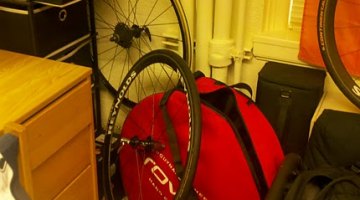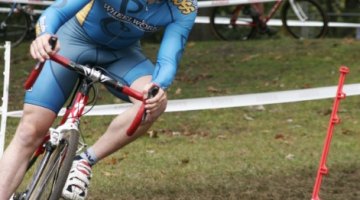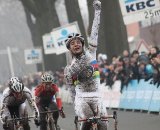Collegiate athletics is an interesting arena: there are both ups and downs to being extremely athletic in college, though anyone reading this is sure to point out that the good surely outweighs the bad. However, sometimes collegiate athletic programs can cause high levels of stress in students, and sometimes the demands can hurt the students more than helping them. On the flip side, according to one study, students tend to have “perceived barriers” when it comes to physical activity, that is to say, they find excuses for not getting involved in sports. Today, we’re taking a look at three different studies about collegiate athletes, and how they can relate to various collegiate cycling programs.
The first study we looked at comes from the Journal of Sports Science and Medicine, entitled “Perceived barriers by university students in the practice of physical activities.” In it, Manuel Gomez-Lopez looks at the inactivity prevalent in college students (video games do not count as activity), and wonders what causes it. He says, “The main goal of this research is to study in detail the main characteristics of university students in order to find out the reasons why they have adopted an inactive lifestyle. In order to do so, a questionnaire on the analysis of sports habits and lifestyle was given to 323 students.”
His findings were varied. Of the people surveyed who were inactive, some pointed to external barriers such as lack of time, while some had “internal barriers” such as simply not liking the physical activity, “not seeing its practicality or usefulness, feeling lazy or with apathy, or thinking that they are not competent in this type of activities.” Of course, there were other reasons, such as the lack of social support. He adds, “Finally, it is important to stress that there are also differences based on gender with respect to motivation.”
So what does this mean for a collegiate program looking to grow their cyclocross team? Clearly, a team of cyclocross racers should be experts at getting past “barriers” (pun emphatically intended) in order to get students to join the team. If the college is in a town where cycling to classes makes sense, showing the practicality of being a skilled cyclist can be a way to show the usefulness of the sport and get students interested. To address questions of competence within the sport, holding regular clinics or practices can be great motivators, and simply showing students a race so that they can see that plenty of people are new at it and still having a blast is always a great option. And of course, as Lopez does point out, the problems with motivation and activity are sometimes gender-based. We can extrapolate from this that a focus on recruiting women and making women feel more comfortable in a sport that is predominantly male would be a good tactic for a cycling team to use.
In a dissertation done by a psychology Ph.D candidate, Denise Steiner, at Rutgers University entitled, “Coping with the demands of being a collegiate student-athlete: an exploratory investigation coupled with a set of procedural guidelines for athletic department personnel and related service providers,” she looks at how being a collegiate athlete may not be as simple as it seems.
Because little research has been done within the sports psychology realm on the plight of the collegiate student/athlete, little is known about the demands placed upon these students, how they cope with the stress or if they feel they receive adequate support from faculty and staff. Collegiate athletes are tasked with a tall order: to make the school look good. This can run from a football team being mentioned on ESPN every night to a grassroots cycling team taking on a National Championship. No matter how large or small the impact, athletes are first and foremost representing their institution, and that can be stressful.
So, in an effort to obtain a more in depth understanding of these issues, a survey was created and distributed electronically to student-athletes enrolled at an NCAA Division-1 college in Pennsylvania. The survey asked student-athletes to rate certain stressors, and while many items were rated as stressful, the most common included not meeting their own expectations and grades, followed by pressure to win, balancing sport and academic demands and being nervous before or during competition.
She concludes that, “In order to help manage these stressors, a majority of the student-athletes reported that they spend time with friends, take a break, exercise, and ask friends and family for advice, suggesting that they utilize both problem-focused and emotion-focused coping skills.”
So what does this mean for a collegiate cycling team? For a team president, it means keeping an eye on members and making sure that they aren’t feeling pressured and that they are getting the support that they need, even if that means skipping a race weekend. Keep an eye on your racers and talk to faculty about providing services they need, including extra tutoring or counseling.
The last study we looked at is from the International SportMed Journal and is titled “The relationship between physical activity level and fatigue in vocational college students.” In it, Ferhan Soyeur looks at students at vocational colleges to see if fatigue and physical activity were linked. As any college student knows, being constantly tired is practically part of the college experience, but is being a student-athlete helping or hindering students when it comes to fatigue levels?
Again, the study was done by using a questionnaire, and the results showed that 55.9% of students claimed to be fatigued. Out of those, over half described themselves as “sedentary.” In fact, Soyeur concludes that, “There was a negative correlation between physical activity and fatigue,” meaning that the more fatigued a student was, the more inactive he or she tended to be, and vice versa, the more active a student was, the less fatigued he or she tended to be. However, most of the students did not consider themselves active, and as such, Soyeur states that, “Vocational college students demonstrated a high prevalence rate of fatigue and their level of physical activity was clearly low. The results of this study indicated that physical activity significantly correlated with the prevalence of fatigue. In order to maintain and improve the health of college students, training, support and opportunity to increase their level of physical activity should be provided.”
In this study, it actually suggests that it might behoove students to become involved in athletics, in particular, club sports like most cycling teams are at this point. Because cyclocross is arguably one of the more relaxed disciplines as far as cycling goes, it’s a great way for students to enjoy physical activity while getting to know fellow classmates in a very different way. While perhaps these so-called sedentary students may not be trying out for the football team anytime soon, getting them interested in cycling on a casual basis at first might be a great way of indoctrinating them into joining the team.
Interested in the science of cyclocross and cycling in general? If you have a specific science-based question, email it to molly [at] cxmagazine.com and we’ll try to answer it!





























